The Sun is out and the evenings are blissfully warm – but is there something strange happening to our skies?Over the past month, there have been more frequent reports of aurora sightings in the UK and US, with the northern lights spotted in lower latitudes than normal.
So why are we seeing more aurorae than usual? And what does it have to do with the Sun? In this article, we explain the solar cycle, where solar flares come in, and how this affects the northern lights.
And if you’re looking forward to clear nights this year, why not plan ahead with our full Moon UK calendarandastronomy for beginnersguide?
What is a solar flare?
A solar flare is a sudden and intense eruption of energy on the surface of the Sun. It’s a brief release of electromagnetic radiation, including X-rays and ultraviolet (UV) light, along with charged particles – electrons and protons.
Solar flares are typically associated with the powerful magnetic activity occurring in the Sun's atmosphere, particularly in regions near sunspots.
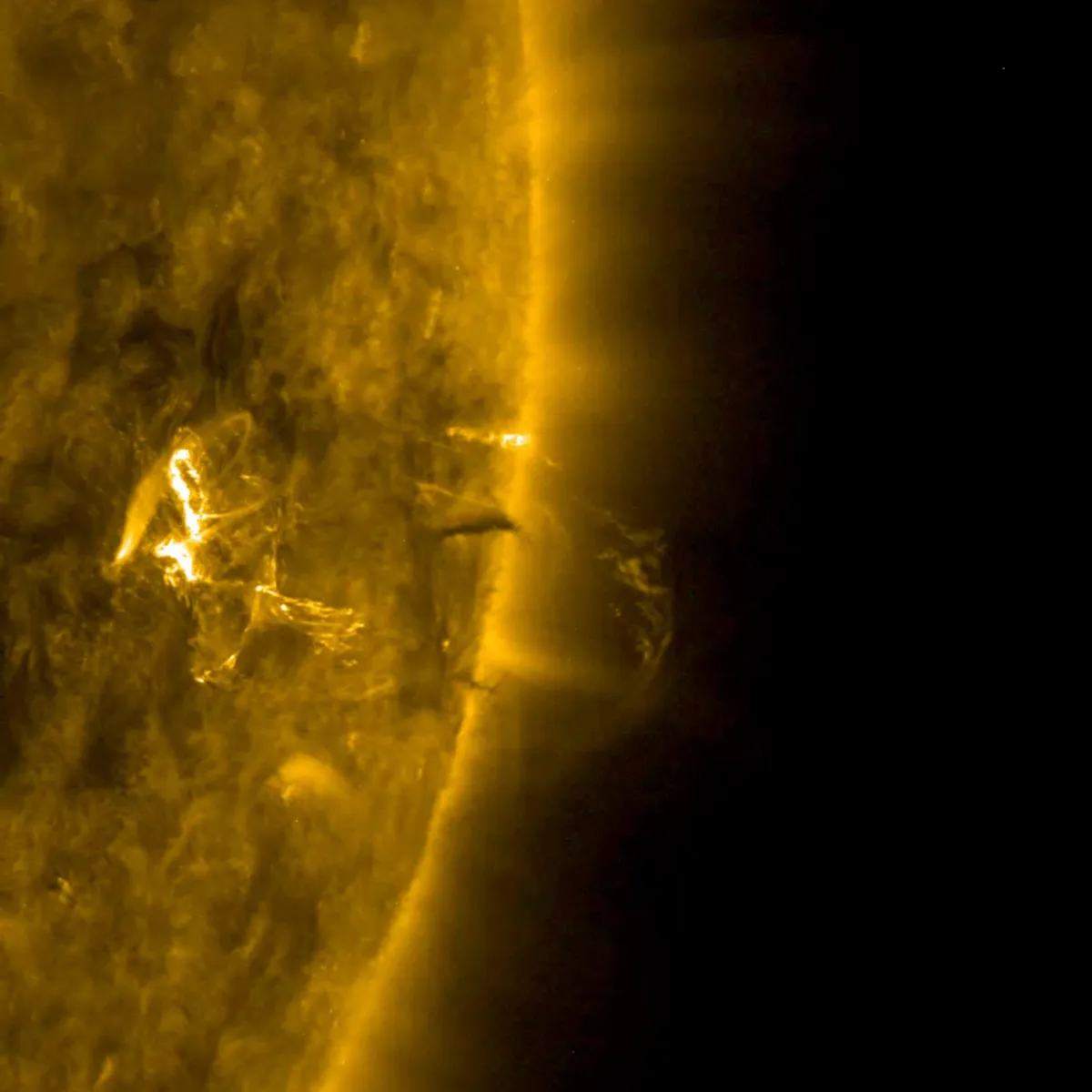
What is a solar cycle?
Also known as the solar magnetic activity cycle, or sunspot cycle, the solar cycle is a recurring period of approximately 11 years, when the Sun's activity and magnetic field vary.
Our Sun is a modestly variable star, and over the course of these 11 years, the number of sunspots (dark spots on the Sun’s surface) increases from a bare minimum where almost none are evident, to a maximum around 5.5 years later, before subsiding again into its ‘quiet’ phase.
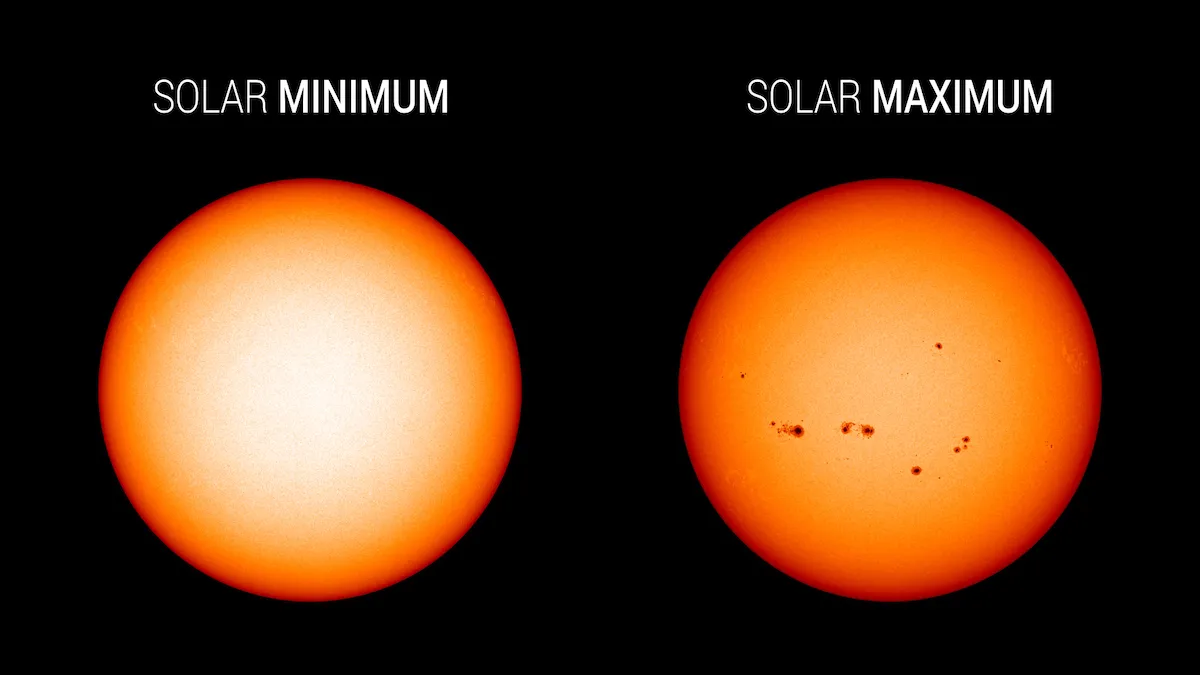
Sunspots are cooler regions on the Sun (although by no means cold - temperatures are still around 3,500°C!), but they have intense magnetic fields – thousands of times more powerful than the surrounding area.
As the number of sunspots increases, so too do these magnetic fields. As these magnetic fields connect, they change into lower energy states and the excess energy is released as solar flares into space.
“The sunspots themselves indicate where the Sun’s magnetic field is looping out and back into the Sun,” explains Dr Darren Baskill, astronomy lecturer at the University of Sussex.
“These sunspots and their magnetic fields can drift together, connect and create huge magnetic bubbles of gas than can be emitted into space – and occasionally, towards the Earth.”
Why are there so many aurorae at the moment?
You’ve probably noticed solar flares cropping up in the news a lot recently. This is because we’re entering into a period of increased solar activity in the Sun’s 11-year cycle. To be specific, Solar Cycle 25.
“The Sun's 11-year cycle has been observed for over 400 years,” explains Baskill.
“Between 2016 and 2022, the Sun was in its quiet phase, with few – if any – sunspots visible. But the activity of the Sun has now ramped up dramatically over the last 18 months, and sunspots are now commonplace, as the Sun approaches a maximum in activity in two years’ time,” says Baskill.
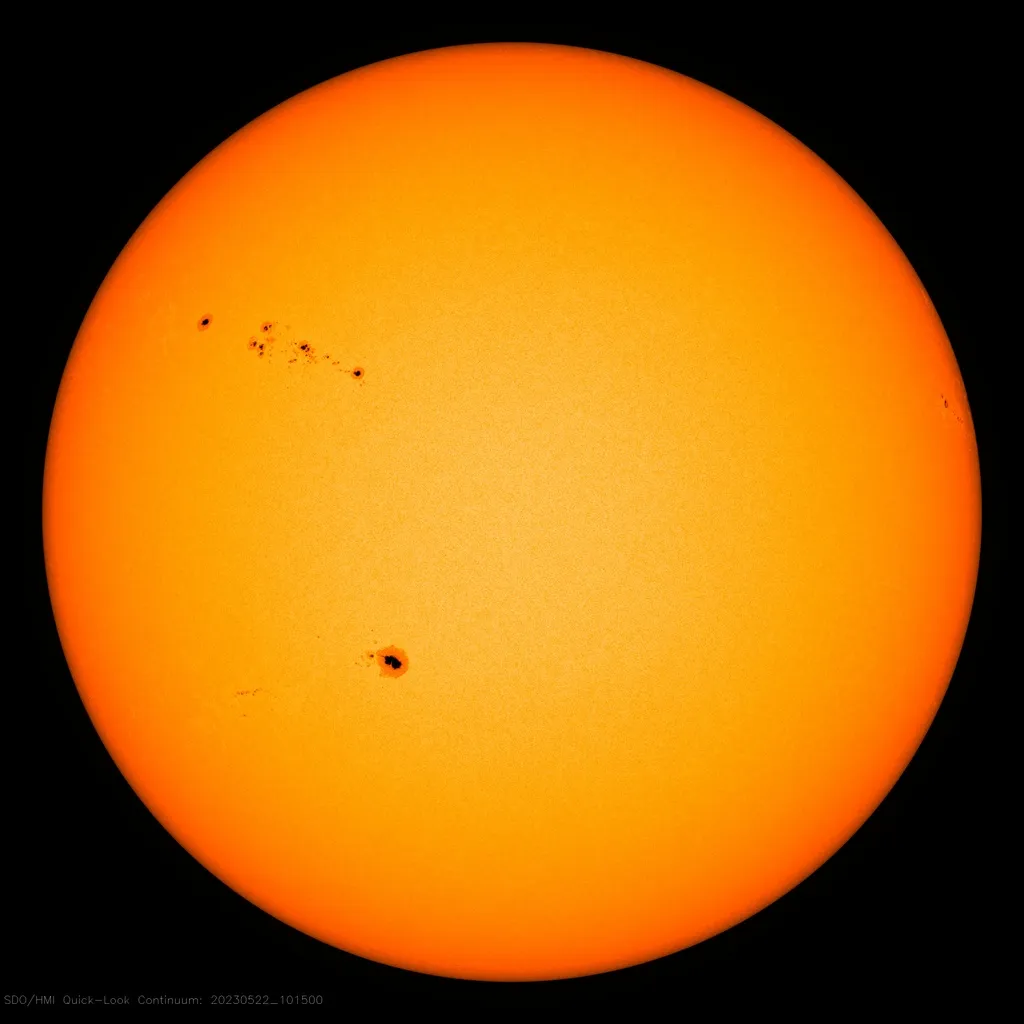
Solar maximum is expected in July 2025, with a peak of 115 sunspots. However, in relation to previous cycles, Solar Cycle 25 is forecast to be a fairly weak cycle.
“While we are not predicting a particularly active Solar Cycle 25, violent eruptions from the Sun can occur at any time,” Doug Biesecker, PhD, panel co-chair and a solar physicist at NOAA’s Space Weather Prediction Center, told the US National Weather Service.
Are solar flares responsible for the aurora?
Yes, solar flares are one of the primary factors responsible for the creation of auroras.
When a solar flare occurs on the Sun, it releases a burst of charged particles from the upper atmosphere (corona), particularly electrons and protons, as a stream of solar wind. Sometimes enormous amounts of matter are shot out from the Sun, and this is known as a coronal mass ejection (CME).
Although the exact mechanism behind what causes the aurora is not fully understood, we do know the Earth’s magnetic field, or magnetosphere, has a role to play.
CMEs can travel at speeds in excess of 500km/s, and so can reach the Earth quickly, within days.
When a CME reaches Earth, it interacts with our planet's magnetic field (without which we would be subject to intense radiation – one of the key challenges facing scientists as they ponder human exploration of the solar system).
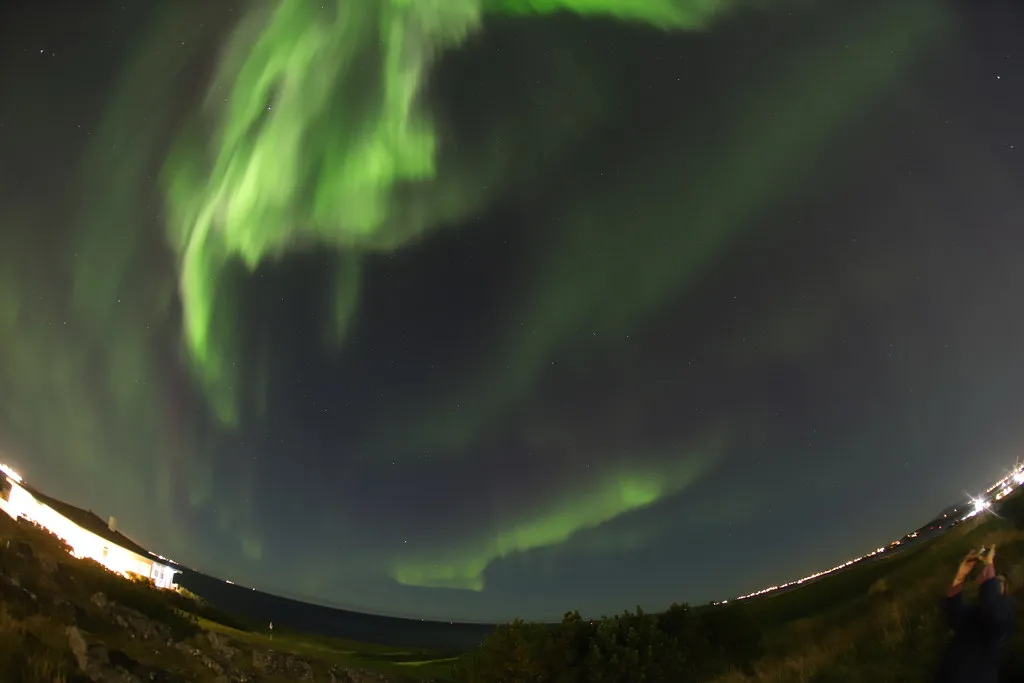
The Earth's magnetic field guides these charged particles towards the polar regions where they travel into Earth’s upper atmosphere and collide with atoms and molecules in the atmosphere, particularly oxygen, nitrogen, and hydrogen. These collisions ‘excite’ the atoms to a higher energy state, causing them to lose a light photon; in other words, emit light.
The colour emitted depends on the type of atom and altitude. As different gases are prevalent at different altitudes (and in varying concentrations), this essentially determines the colour of the aurora.
For example, for a green aurora, it’s likely to be oxygen at around 100-240km above the Earth’s surface.
Are solar flares dangerous?
Potentially – but please don’t get worked up over scaremongering on social media. It’s important to remember that Earth's atmosphere provides substantial protection from the harmful effects of solar flares, so you needn’t worry just yet.
Our magnetic field and atmosphere help to deflect and absorb much of the solar radiation, however strong solar flares can interfere with radio communications.
By increasing the ionisation of the upper atmosphere, radio signals can be absorbed or reflected by these ionized layers, causing signal degradation or loss of communication. On 21 February 2023, NOAA reported such an event: a strong solar flare on 17 February caused temporary radio blackouts on the sunlit side of the Earth.
In extreme cases, powerful solar flares can cause geomagnetic storms on Earth. For example, a CME event on 6 September 2017 reached Earth and led to a moderate geomagnetic storm event two days later.
When these storms interact with the Earth's magnetic field, they can induce electric currents in power grids. These currents can overload transformers and other electrical infrastructure, leading to power outages and potential damage to the grid.
As far as human health is concerned, results from a 2019 study, published by the Department of Environmental Health at Harvard School of Public Health, suggested that geomagnetic disturbances (driven by the 11-year cycle of solar activity) are associated with increased mortality from cardiovascular diseases and myocardial infarction (MI) in 263 US cities. Although the authors do note that further investigation is needed.
But a lack of activity on the Sun could also be viewed as dangerous. For example, between 1645 and 1715 was a particularly quiet time for sunspots, and it’s since been associated with cold weather in the northern hemisphere. Also known as the ‘Maunder Minimum’ or ‘Grand Solar Minimum’, there is evidence for worldwide cooling at this time, as the lack of solar activity coincided with a Little Ice Age.
Why is the aurora being seen so far south?
It’s not unusual to see aurora near the poles of both the northern and southern hemisphere. And rather excitingly for the coming years, the aurora typically displays heightened activity for around two to three years before, and after, the Solar Maximum in July 2025.
January through to March are popular months for aurora chasers, thanks to the long dark nights, although they can occur year-round.
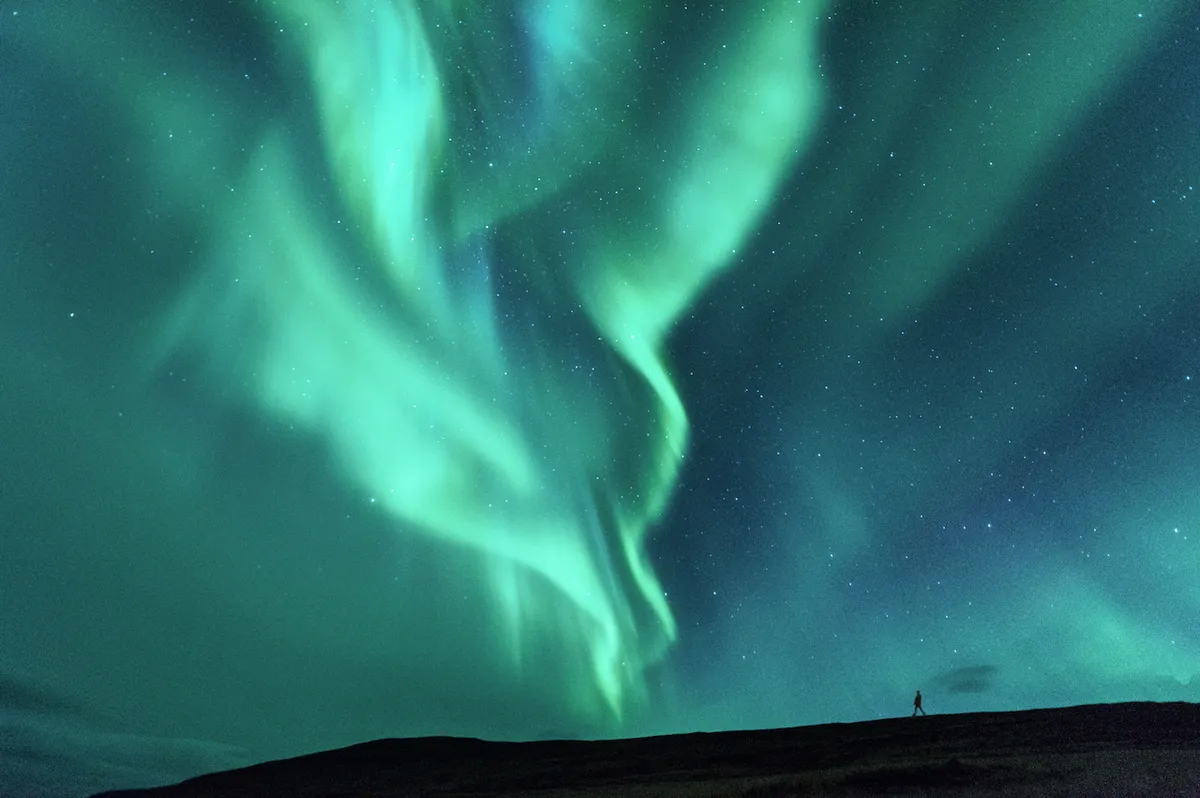
But why are we seeing them in Cornwall, in southern England?
“During peak activity, sunspots (and the bubbles of gas created from them) are more frequent, bigger and stronger," says Baskill.
“And when those bubbles of gas hit the Earth they make the atmosphere glow – which we call the aurora. At solar maximum, we get more frequent aurora, and they are also more energetic, resulting in the aurora being visible further away from the poles of the Earth.”
“So we are seeing more aurora this year as the activity of the Sun increases, and this should last another 3 or 4 years until 2027, after which the Sun’s activity will begin to fade once again.”
About our expert
Dr Darren Baskill is an outreach officer and lecturer in the department of physics and astronomy at the University of Sussex. He previously lectured at the Royal Observatory Greenwich, where he also initiated the annual Astronomy Photographer of the Year competition.
Read more: